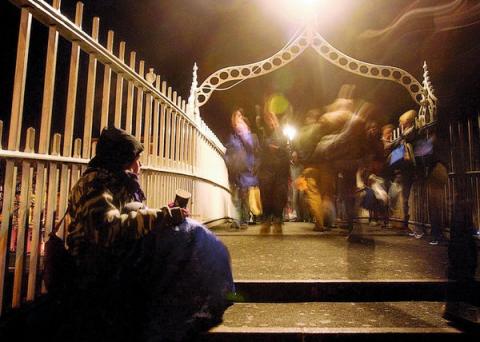Government called upon to reduce inequality

The Irish section of the European Anti-Poverty Network (EAPN) has called on the government to back the proposed European target to reduce the risk of poverty by 25% in the next 10 years.
This year is European Year for Combating Poverty and Social Exclusion and the EAPN believe efforts to tackle poverty should be implemented in tandem with the government’s own objective to eliminate consistent poverty in Ireland by 2016.
According to Anna Visser, Director of the EAPN in Ireland, the government has a responsibility to play a key role in the efforts to lift 20 million Europans out of poverty by 2020.
She said: "Failure to back the adoption of a concrete European target would send a hugely negative message about the government’s own commitment to eliminate consistent poverty by 2016, to the 625,000 Irish people who live every day at risk of poverty, and to the 84 million people who live at risk of poverty across the European Union."
She continued: "A familiar refrain from the Government in the run-up to last December’s budget was ‘everyone must share in the pain’. It is now time for the Government to prove that everyone will share in the recovery."
The proposed poverty target was set out by the President of the European Commission José Manuel Barroso in ‘Europe 2020 – A European Strategy for Smart, Sustainable and Inclusive Growth’. The document succeeds the Lisbon Agenda as the European Union’s roadmap for economic, social and environmental progress.
The poverty target in Ireland’s National Action Plan for Social Inclusion 2007-2016 is “to reduce the number of those experiencing consistent poverty to between 2% and 4% by 2012, with the aim of eliminating consistent poverty by 2016”.
In an interview with Politico in February, Minister for Social and Family Affairs Mary Hanafin said: "Obviously employment is going to have a bearing on poverty rates everywhere. So the idea of trying to ensure that we can keep investment coming in to the regions is critical [...]. That’s the one way of lifting people out of poverty."
A person is at risk of poverty if they have an income that is less than what is regarded as the norm in society, giving a lower than normal standard of living. This is the most common measure of poverty used across the EU.
Consistent poverty is the measurement preferred by the Irish government and developed independently by the Irish Economic and Social Research Institute (ESRI). This measure identifies the proportion of people who are both relatively poor (less than 60% of median income) and who are also deprived of at least two of the 11 goods or services considered essential for a basic standard of living.
In 2008, 14.4% of the population were at risk of poverty while the percentage of Irish people living in consistent poverty was 4.2%. Children were the most at risk group in Ireland with an at risk of poverty rate of 18% while the consistent poverty rate for the unemployed in 2008 was 9.7%.
In the most recent publication by the EAPN, It’s Time to End Poverty, Joanna McMinn argues that there is a growing movement against poverty in Ireland. She wrote: "Many economists and commentators, including the OECD, have pointed out that Ireland is one of the most unequal societies in the developed world."
"In one fell swoop in Budget 2008 the Equality Authority saw its statutory funding reduced by 43% and the Irish Human Rights Commission saw its budget quartered. On top of this, Ireland’s dedicated anti-poverty body, Combat Poverty Agency, was subsumed into its parent Governmental department, effectively strangling its crucial independent voice."
McMinn continued: "Our view is that the recognition of poverty, and with it, the urgent need for redistribution and truly democratic political influence must be integral to a stronger and improved equality and human rights infrastructure which includes the four pillars of watchdog agencies, law, policy and civil society."
